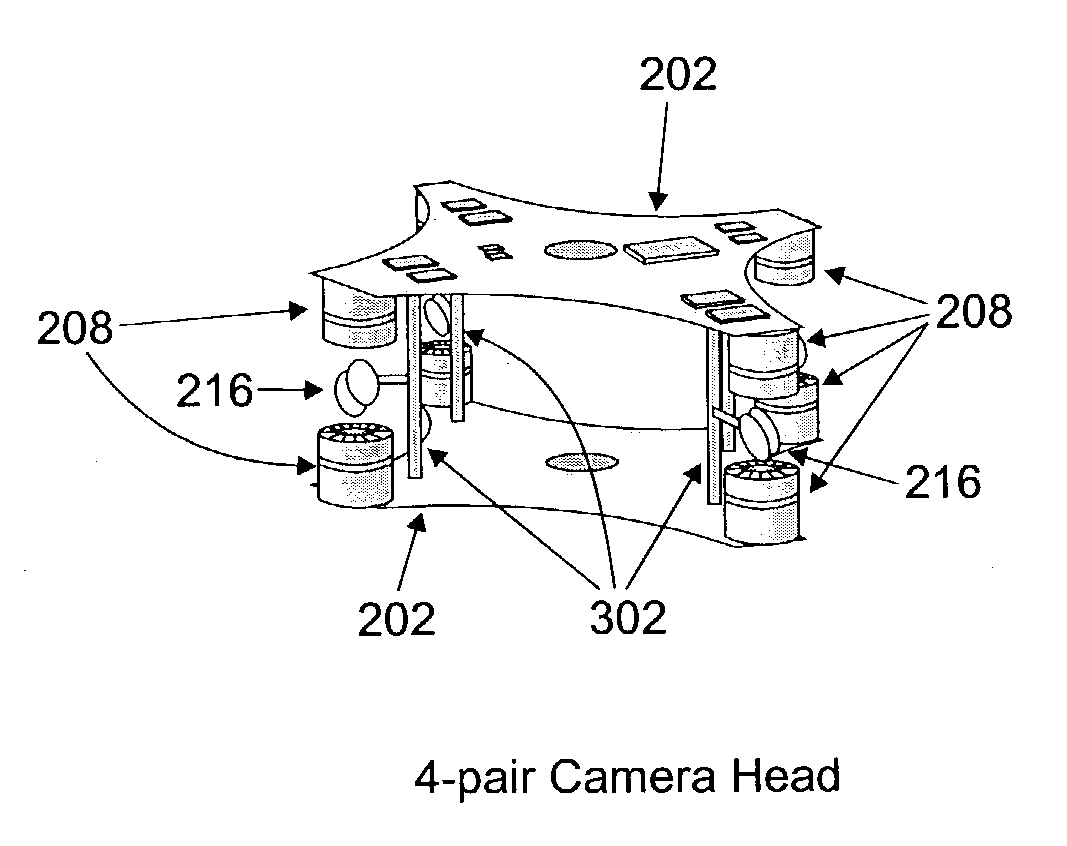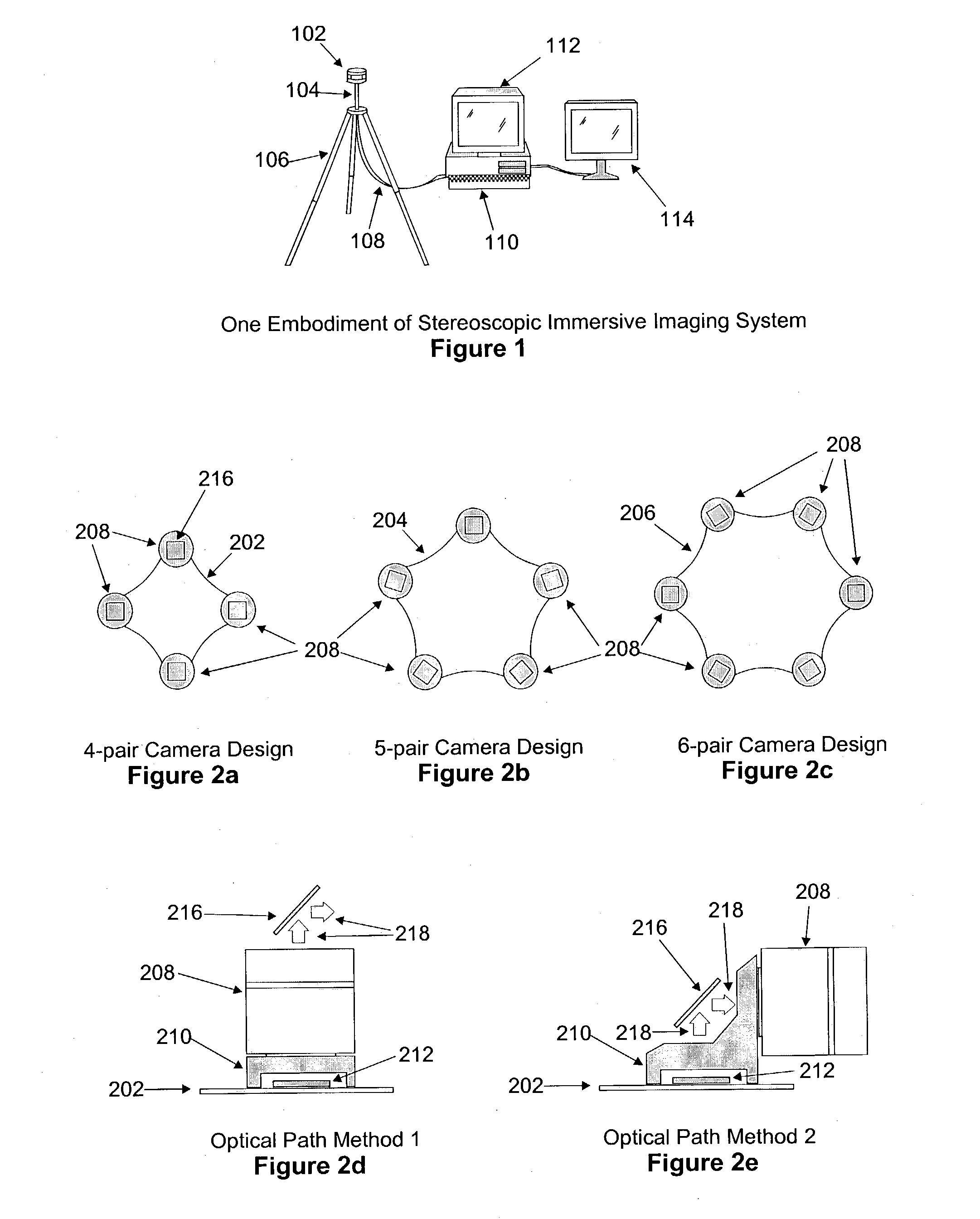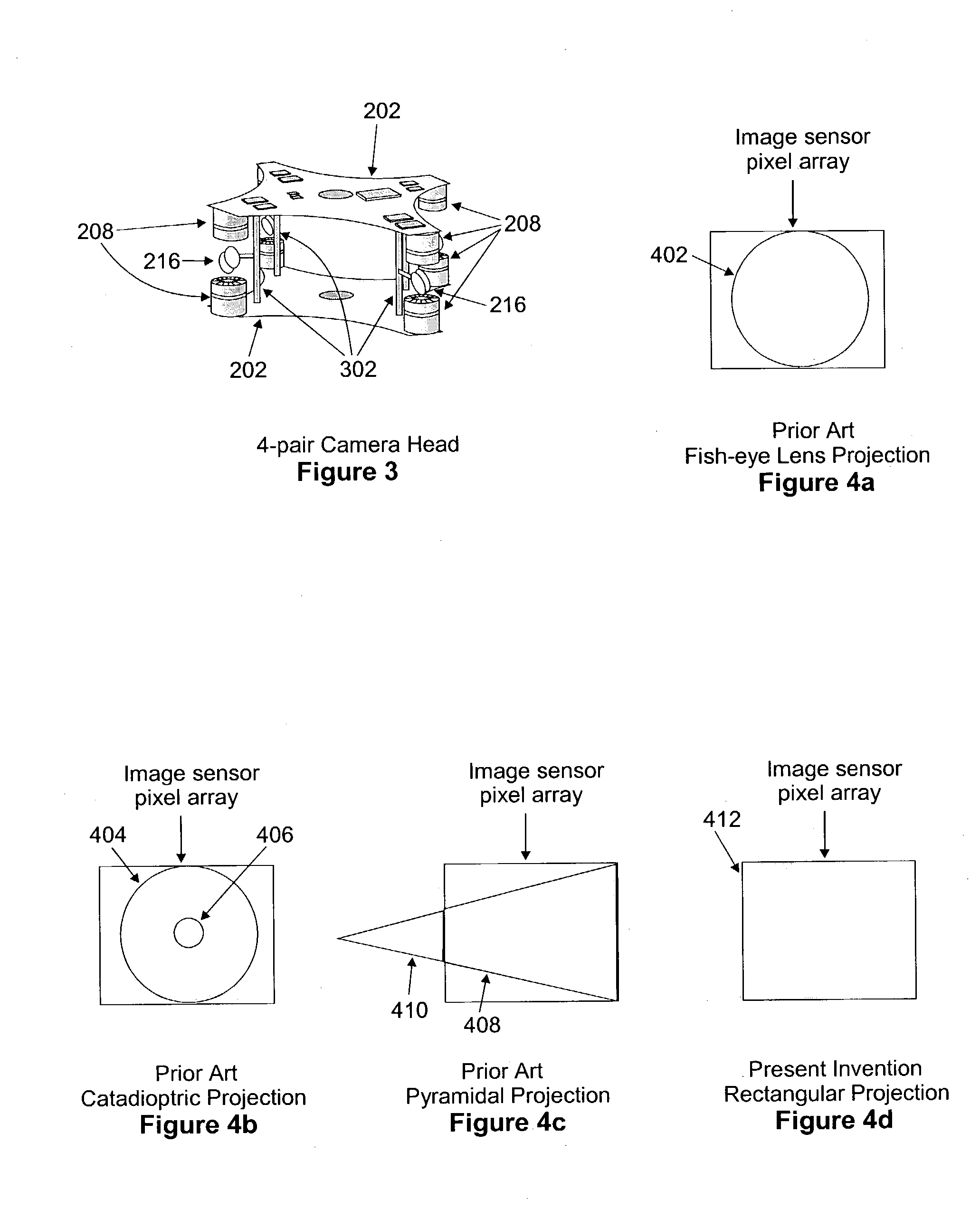Immersive imaging system
a technology of imaging system and camera, applied in the field of imaging system, can solve the problems of high power consumption, limited rotational extent, and drawbacks of the mechanism
- Summary
- Abstract
- Description
- Claims
- Application Information
AI Technical Summary
Benefits of technology
Problems solved by technology
Method used
Image
Examples
Embodiment Construction
[0106]The present invention is based on the concept of acquiring and processing dual superimposed video image data sets. The acquisition of images is accomplished without moving parts by properly positioning multiple imager sub-systems and coplanar reflective elements. Operation of the system builds a data set for each of the views that a person's eyes would see if he / she were to move his / her head around at a fixed point in space. In preparation for transmission, the video image data from each of the imager sub-systems is processed through several operations while in the camera head. The data is reversed, preferably corrected for distortions and aberrations, compressed, transmitted from the camera head to a processing unit (preferably with data compression), merged into a continuous data set, then viewed on monitors. A monoscopic version of the complete data set from either set of imagers is presented on a monitor in one of several formats based on user preferences. These formats in...
PUM
 Login to View More
Login to View More Abstract
Description
Claims
Application Information
 Login to View More
Login to View More - R&D
- Intellectual Property
- Life Sciences
- Materials
- Tech Scout
- Unparalleled Data Quality
- Higher Quality Content
- 60% Fewer Hallucinations
Browse by: Latest US Patents, China's latest patents, Technical Efficacy Thesaurus, Application Domain, Technology Topic, Popular Technical Reports.
© 2025 PatSnap. All rights reserved.Legal|Privacy policy|Modern Slavery Act Transparency Statement|Sitemap|About US| Contact US: help@patsnap.com



